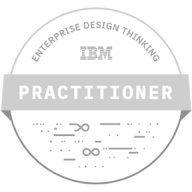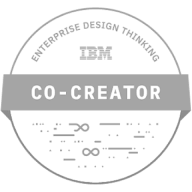
How to Develop a Fintech App from Scratch: Features & Costs
Want to know more? — Subscribe
Fintech affects global industries by storm and revolutionizes the ways business is conducted. Broadly speaking, fintech means a set of technologies aimed to improve financial management and facilitate money transactions. Besides, the fintech solutions can optimize costs and create additional sources of income. Hence, the combination of financial services and technology is expected to be an exciting and fast-evolving industry in 2022.
During past years, users of different ages and social statuses experienced a pressing need in new fintech products. As a result, we see that the demand for web and mobile application development for fintech is only growing. To build a fintech app for particular needs, banks and different financial establishments actively invest large funds. B2B and B2C customers also show a high interest in new and more convenient financial solutions.
The new financial solutions for gadgets are expected to replace outdated software. These products based on advanced technologies and algorithms help business owners and consumers manage their financial operations transparently. Mobile fintech apps open access to a vast audience globally and achieve significant growth prospects. These facts make many business owners wonder how to build a fintech app.
And many startups want to know more about the types and trends of fintech apps before investing in their development.
In this article, you will learn how to create a fintech app and find all vital information, such as costs, processes, and trends in fintech development. We will share the most important points to consider when choosing the right company to develop your custom fintech app.
Types of Fintech Apps
Fintech apps apply to several sectors and help consumers and businesses carry out transparent financial services and operations. These apps are expanding beyond traditional apps to industries such as education, trading, fundraising, and investments.
Fintech apps can be different, and considering these products’ design, security requirements, and functionality, fintech app developers have to offer customers a product that would meet their expectations.
Let’s take a closer look at some of the most popular types of fintech applications.
Payment and Money Transfer Apps
Mobile payment platforms allow consumers to pay for goods and services quickly and safely. At the same time, these apps allow business owners to receive and transfer payments directly into their bank accounts without compromising security. Users can also send or receive money from other bank accounts or perform banking activities using these apps. Among many popular features, payment apps allow transactions through alternate banking systems like Stripe, PayPal, Revolut, etc.
Read also: How to Create a P2P Payment App
Mobile Banking
The innovative functionality of mobile apps allows users to connect to traditional banks, online banks, and neobanks.
The continued adoption of digital payments and the growing demand for such services to meet the latest technology trends have greatly simplified and improved financial settlements. Mobile banking is a software product designed for customers’ financial transactions. These apps are very popular, but there is still room for new software products in this market despite the significant competition.
Loan and Lending Apps
Money loan apps are convenient, secure, and confidential. They allow users to lend money without involving any financial or credit organization as well as loan brokers. Using loan apps, users can share the details on which they can avail of loans. These apps offer specific features like seeing credit scores, filling loan applications, and determining the possible loan amount based on users’ data and their credit history.
Trading Apps
Mobile platforms on smartphones for trading securities and assets are becoming more and more popular, as they are convenient for both traders and investors.
Such fintech apps support real-time broadcast streaming of data to monitor the stock market situation, as well as enable to place bids and sending instant notifications. Using built-in forecasting and stock analytics tools, traders can generate income and reduce risks. Besides, buying and selling crypto assets like bitcoin is also getting easier thanks to dedicated mobile apps.
Investment Apps
Investment mobile apps help users make the right decisions to maximize their profits. These apps offer search and comparison of assets for investing, real-time notifications, and much more. Automated financial advisors help generate quality investment offers. You can achieve a high return on investment (ROI) thanks to user-friendly and helpful mobile apps with optimal cost-effectiveness.
Today, investment apps attract many customers even in a narrow and highly competitive market.
Insurance Apps
You can perceive these apps as a bridge between insurance organizations and consumers. Insurance apps can vary from simple tools for tracking insurance payments to sophisticated AI-based systems that evaluate users with ML models and personalized insurance plans.
Helping customers file claims faster, these apps include such features as assistance in filing, filter-based policy searching, receiving payments, etc. An insurance app can calculate the customers’ ratings based on their behavior and lifestyle.
Risk Management Software
With a risk management app, individuals and companies can track where funds are flowing more accurately, work with private and business accounts easily, and receive reports on each transaction. This approach reduces the costs associated with data loss, errors, and time wasted on cash flow control.
These apps are also designed for risk assessing, forecasting market events, detecting patterns, managing spending, and optimizing cash flow in the user’s wallet.
Financial Analytics Software
These mobile apps provide customers with high-quality and real-time analytics, as well as financial technology solutions. By analyzing large data amounts using AI tools, financial analytics apps help monitor daily expenses and even get revenue from savings.
For investment and fund managers, financial analytics apps can evaluate potential investment opportunities, monitor current holdings, and strategize future investments.
We at Softermii are ready to help you develop any type of fintech app mentioned above.
The Cost of Developing a FinTech App
Mobile application development for fintech is by no means a cheap pleasure. But in recent years, the development of new fintech apps of different types has become a necessity for employees of the banking sector, credit companies, investment organizations, insurance groups, and individual entrepreneurs.
The main purpose of these apps is to help users in solving financial issues efficiently. The idea to develop a fintech app is to create an intuitive interface, increased functionality, and useful tools to make specific financial transactions easier.
A distinctive advantage of mobile apps lies in the availability of smartphones for end-users. Almost every user can afford a smartphone of the latest generation. According to Statista, worldwide sales of smartphones have reached almost 1.6 billion units in 2021. Fintech apps for mobile devices refer to the digital transformation that continues to serve many users and provide businesses with new growth opportunities. So, if you have decided to build a fintech app at this point, let’s find out how to do this and what is the fintech app development cost?
Cost of Different Fintech App Types
Since each business is different and has different goals, there is no single fintech app that would meet the needs of all types of businesses. In addition, the costs are determined by the types of fintech applications.
Hence, the price of creating a fintech app might differ depending on the type, complexity, and features of the project. However, any customer needs to know a rough estimate of the cost of developing the required app and the time needed.
The average cost of custom fintech app development can range from $50,000 to $300,000.
However, the exact figure depends on many factors. That is, creating a basic fintech app will require a minimum of $ 60,000 and a time frame of at least 2 months.
A fintech app with basic functionality and a simple user interface can cost around $40,000. Also, the development of an advanced app with sophisticated functionality and modern technology will cost $50,000 and more, depending on the tasks assigned.
|
Application Type |
Development Time (weeks) |
Cost* |
|---|---|---|
|
Mobile Banking App |
20 |
$175,000 |
|
Investment App |
8 |
$60,000 |
|
Loan App |
12 |
$90,000 |
|
Insurance App |
14 |
$100,000 |
|
Risk Management App |
11 |
$80,000 |

|
||
*Costs are given at an average payment rate for fintech app developers of $40 per hour.
Please note that if you want to enable advanced features in your fintech app, such as real-time data tracking, EMI calculator, data analysis, etc., this will require a larger budget. If you need to calculate quotes for a custom project, feel free to contact our team, we will be happy to help you with this.
Cost by Team Model
The choice of team type significantly affects the cost of a fintech app development. Each option has its pros and cons.
Taking that an MVP of a fintech app can be created within 40 days and assuming that the customer is located in the US and the order fulfillment company is in Eastern Europe, the average costs to create a fintech app will be as follows:
|
Team Type |
Cost of Work |
|---|---|
|
Own Team |
$90,000 |
|
Local Agency |
$120,000 |
|
Hired Freelancers |
$30,000 |
|
Outsourcing Company |
$50,000 |

|
|
The cost to develop a fintech app also depends on the team size. If a fintech software development company does not have the necessary resources, it needs to hire qualified employees and fill their skill gaps. The cost to launch a fintech app is not included.
Given that Softermii has vast experience, we can help you with the selection of a dedicated team to create a required software type according to your needs. This is the best option if you are in doubt about what kind of cooperation model will be the best for you.
Cost by Countries
Another important aspect that affects the price to build a fintech app is the location of the development companies or freelancers. The price is calculated based on the average app size, moderate product complexity, and the hourly rate of a team of several experts (business analysts, project managers, developers, designers, and others), and a period of 4 to 9 months of app development. Check out the average prices in different regions for several types of apps according to fintech trends in 2022:
|
Application Type |
Eastern Europe |
Central Europe |
Western Europe |
North America |
Latin America |
|---|---|---|---|---|---|
|
Mobile Banking App |
$280 000 |
$390 000 |
$660 000 |
$820 000 |
$240 000 |
|
Loan App |
$190 000 |
$270 000 |
$450 000 |
$560 000 |
$160 000 |
|
Insurance App |
$140 000 |
$190 000 |
$300 000 |
$390 000 |
$120 000 |
|
Investment App |
$198 000 |
$270 000 |
$450 000 |
$560 000 |
$170 000 |
|
Risk Management App |
$200 000 |
$300 000 |
$400 000 |
$500 000 |
$180 000 |

|
|||||
As you can see, if we compare the cost to develop a fintech app in the US with other regions, developers from Eastern Europe can create this kind of software product for a quite affordable price and with the same quality.
Tech Stack to Build FinTech Application
A tech stack is a set of tools used to create a fintech app. Different programming languages, frameworks, libraries, etc., can be selected depending on the requirements. You should consider the main factors affecting the selection of a tech stack to develop a fintech app including project complexity, time, budget, product architecture, and security.
Web Development
A fintech app has to bring profit to a business and customers should have the necessary tools for its convenient use. Thus, developers need to think about its functionality.
To identify unique and valuable features for users, it is necessary to conduct market research and competitor analysis. The most critical features of your app will be connected with security. Besides, a modern fintech app should be integrated with social networks and geolocation. Considering these requirements, front-end developers need to pay attention to the application’s client-side and cross-platform interaction.
Wireframes Design
The fintech product development process usually starts with creating the user interface and interaction options. To make a minimum viable product (MVP), developers have to create a complete UX framework, design solutions for different screens, and a single cross-platform version of the mobile app.
At the same time, the overall design of the future app should be thoughtful, attractive, and functional.
Mobile Development
Building a mobile app for fintech involves the creation of a large set of solutions, thoughtful settings, and ready-to-use functions following the customer’s expectations. Mobile UX/UI developers have to strike the right balance between the goals of your future app and the features that will be convenient for users.
Combining the technical side of the project and aesthetic elegance, developers should create payment gateway integration, push notifications, and constant feedback with customer service.
Back-End Development
This process is related to data integration, configuration, and security. Fintech app developers have to provide CMS-based content and create the logic necessary for a stable work of the product. Taking into account the design and front-end, developers have to customize the CMS and optimize the work with app content.
Databases
When creating a fintech app, the SQL and NoSQL databases are used. Non-relational NoSQL databases allow storing a significant amount of unstructured information. Still, developers often prefer relational SQL and PostgreSQL databases since the data is better structured and can be stored in tables. This provides a higher level of security.
Cloud vs Server
Mobile app developers are increasingly adopting a serverless architecture that allows apps to run without the need to manage the underlying infrastructure behind them. The app runs on the server, but the space on the server is managed by cloud services provided by Amazon, Microsoft, Google, etc.
This will help you reduce costs for data storage and processing, as well as enable the faster and more secure launch of new services. Thus, your company won’t need to invest in server management.
Core Fintech Apps Features
New technologies are the backbone of the fintech industry. The design combined with the most contemporary features can help your future fintech app stand out. Users have high expectations about fintech app features and services. If you consider how to create a fintech app from scratch, first of all, you need to check out the most powerful and trending app features for startups that define fintech solutions.
Authentification
Big data analytics helps analyze a user’s banking activity, potentially identify errors, as well as provide ongoing maintenance and support. Adaptive authentication collects and retrieves information about the user’s geolocation, registered devices, biometric data, OTP, and more.
Transaction History
Undoubtedly, online payments are the most popular category of fintech. Based on the user’s spending and transaction history, the mobile product created by a fintech app development company can give recommendations for using the right services.
Money Transfer
Modern fintech apps can offer various functions, such as account tracking and money transferring, so it is very important to include these features in your fintech app. To do this, developers have to configure smooth APIs and fast access to websites.
Account Management
Financial reporting and account management are valuable features for fintech app users. They can exhaust their monthly budget in the middle of the month and wait for their salaries or decide to be credited. A comprehensive reporting system will keep this at bay and contribute to the app’s usability.
Visualization and Dashboards
If you want to have a consumer-focused app, users should like to use it. For that, a fintech app can have dashboards and AI-powered chatbots to research users’ queries without compromising security.
Notifications
Push notifications keep the app users engaged and informed about various ongoing events. These updates will also help users stay up to date with their finances, such as balance, failed or pending transactions, etc.
Billing / Invoicing
Thanks to modern solutions, billing becomes easier and more reliable every day. Integrated quote and invoice management allow users to receive payments faster, get alerts about unpaid invoices and send reminders.
Automation
The automation feature allows users to manage and track payments. Cloud technology enables users to organize teamwork without time or space restrictions, as well as focus on priority tasks.
FinTech Development Process
If you want a successful fintech app, then it has to be competitive and profitable. To make a fintech app that will work successfully, developers have to take into account your needs and use the right tools. Also, a fintech app must adhere to legal regulations since financial services that do not comply with legislation are doomed.
Discovery Phase
To get a good end-to-end product, it’s crucial for you to think over a clear concept in advance and convey it to the development team. The team should perfectly understand the idea of your fintech app. To do this, the idea must be clearly articulated. Therefore, you need to communicate regularly with the development team and discuss current issues at all stages of work on the app.
Design Phase
During the fintech app design phase, experts create the wireframe and layout of the future product. This is the basic layout of all screens needed to understand the app logic and workflow. Each feature has to match the visual design. Such a prototype gives a clear idea of the tools used, allows seeing animation, and helps better understand how the app works. Designing a fintech platform is an important step and should be given special attention.
Development Phase
This stage includes developing web and mobile designs, creating databases, frontend and backend development, as well as ensuring connection with cloud servers. There are several development methodologies such as Waterfall, Agile, V-shape, Spiral, etc. According to the chosen methodology, all tasks are distributed, and deadlines are set so that the developers have a well-structured app business plan to follow.
Testing Phase
The app should be tested, and the necessary adjustments have to be submitted to the development team for improvement. A proven way to check an app is through a closed beta test for a selected group of users. At the same time, you have to take particular data protection measures before the app launch.
Product Improvement/Support Phase
After reviewing feedback from beta testers and identifying flows found, fintech application developers make the necessary updates and improvements to the app. Once developers have completed this task, you can present the mobile app to your target audience.
Challenges of Creating Fintech Apps
The fintech industry is at the forefront of financial technology. As with other technological processes, critical issues related to data security, fraud prevention, and integration of AI & ML algorithms can arise during the development of a fintech app.
Compliance with Security Protocols
Fintech startups must comply with the rules and standards of the countries in which they operate. There are many technical and legal aspects to consider regarding data sharing and ownership. Even a minor violation of the current legislation can mean the end of your startup.
Fraud Prevention
To prevent account hacking, fraud, and data theft, it is necessary to ensure secure authentication and authorization, encrypt data, and conduct regular tests with simulated attacks. You should quickly identify vulnerabilities, and fix security flaws.
Customer Data Security
Leaking user data can cause huge damage to your startup. Therefore, when developers start to build a fintech app, they need to focus on security measures. Particular attention should be paid to writing a secure code, using data encryption, and all-around testing.
AI & ML Algorithm Implementation
The use of new technologies such as artificial intelligence (AI) and machine learning (ML) is a requirement of the times. Therefore, it is desirable to include them in the app infrastructure. AI and ML can help you track records, support personalized recommendations, provide data analysis, improve customer interactions, and more.
Read also: How to Reduce IT Infrastructure Costs
Third-Party Usage
Integration with third-party components such as payment gateways, analytics systems, chatbots, cloud storage, and social media accounts can compromise the security of the fintech app. Therefore, you should choose reliable tools for interacting with third-party elements.
FinTech Apps Trends in 2022
The fintech industry is constantly evolving and pushing more startups and entrepreneurs to experiment with innovative solutions. Keeping up with new trends in fintech can significantly improve your mobile app and increase its competitiveness.
Wealthtech
Money and wealth management is rapidly gaining in importance due to the increasing users’ interest in fintech tools. In post-pandemic reality, business meetings and negotiations are losing their relevance. People prefer to have financial instruments on their smartphones and use them for earning money.
Read also: How to Build a Wealth Management App
Web3 and Decentralization
Web 3 is a new concept of the Internet based on decentralization and the absence of a single control center. Web3 apps (dapps) run using either blockchain or decentralized networks consisting of many peer-to-peer servers and form a crypto-economic protocol.
RegTech
Regtech apps help companies and startups solve fintech regulatory issues, assess risk, and comply with laws. These high-tech products are based on machine learning and can analyze big data. Cross-platform analytics and automation help reduce legal errors, avoid or minimize risks associated with national and international regulations, and provide guidance on legal business models.
Softermii Experience
For EXtoBit, a cryptocurrency exchanger, we’ve taken responsibility for the entire technical side, marketing, and UI/UX decision-making during the project.
Read also: Building Your Own Cryptocurrency Exchange
EXtoBit allows making hyper-quick transactions that are very convenient for users. What’s more, the exchanger has lucrative exchange rate pricing deals for their long-term members and special offerings for their affiliates. At the same time, the business came to us for assistance in making their fintech solution stand out among numerous cryptocurrency projects.
For the project, we’ve concentrated on safety and marketing. These days, cryptocurrency still operates at a high level of uncertainty, and providing safety of money transfers is a real challenge. As for the marketing, we needed to select the list of selling points that will help the client stand out in the sharp competition.
The technical solution Softermii was built on C# with the back-end divided into isolated applications that strengthen the overall security. The back-end applications used ASP.NET Core framework, MS SQL Server is the database engine, and front-end programming was executed with Vanilla JS and React.
We’ve introduced and clearly communicated six levels of membership users can choose from in terms of marketing. As a result, EXtoBit has opened with a consistent number of early adopters and still keeps expanding its user base.
Bottom Lines
If you own a startup, you do not need to have an entire analytics department to measure key software development metrics. You can analyze them yourself or entrust Softermii to do it — our specialists will help you clearly measure the growth progress of your business. Being a reliable partner, our team willingly helps startups and entrepreneurs develop contemporary fintech apps for web and mobile gadgets.
We will be more than happy to consult you on any topic regarding the development of software products in general and a fintech application in particular.
Frequently Asked Questions
Softermii has been developing different types of mobile and web apps for more than 5 years. Our team does not pursue the number of orders over the quality of their implementation, as we always focus on the results paying the greatest attention to each detail. Softermii already successfully helped many startups bring their ideas to life and got positive feedback.
Yes. Softermii offers a full software development cycle with flexible collaboration models. MVP development helps the customer understand that the final product will fully comply with the original idea. Our developers can convert customers’ ideas into promising and profit-making projects.
The Head Offices of Softermii are located in Los Angeles, USA, and Kyiv, Ukraine. We also have offices all over the world: in Israel, Sweden, Germany, and the UK.
Yes. Softermii brings together more than 100 qualified experts. Our IT professionals have vast experience and expertise to develop software projects of different complexity. We can provide you with a dedicated team to create the most advanced software products at competitive prices.
How about to rate this article?
301 ratings • Avg 4.4 / 5
Written by:
























